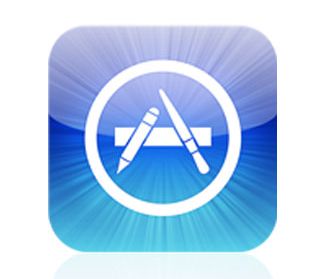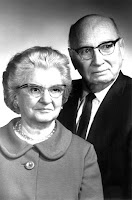The transistor radio could have been good for so many things. People have been know to learn a whole other language just by listening. But in 1954 when the transistor radio had its debut there was something slightly less academic waiting for those most poised to be listening. The first of the baby boomers were soon to be entering their teen age years and this would make a difference in how the radio was used to spread what was playing. Rock and Roll had been slowly swimming to the surface of the music scene since Crudup recorded his song, "That's All Right, Mama"in 1947.
With each new invention, mass media was spreading its chosen message faster. Speed wasn't the only issue to be considered as this genre started to make its leap into the main stream. Marshall McLuhan was credited with saying "the medium is the message" and a extremely clear example of this fact is the discussion of radio and rock and roll. McLuhan was saying the form of a medium embeds itself in any message it would transmit or convey, creating a symbiotic relationship by which the medium influences how the message is perceived. So this new thing, the transistor radio, gave the feeling of freedom from 'being confined to the family's console radio in the living room" says, Wesley Kinney. If we take that one step further we can safely assume that the freedom wasn't just from the console but included freedom from parents and the house in general.
The theme songs for this perceived freedom would have been the rock and roll songs of the 50s; all out of the earshot of mom and dad. It is the beginning of the rebellion that comes to be associated with much of the era. The family up to this point had been pretty inseparable. Where rock and roll was not main stream, at first it was spreading rapidly almost secretly. The first radio show known to play rock and roll was fitting that it broadcast late at night. Starting in Cleveland, Ohio in 1951 and first became popular among teens who were already spreading the word. The arrival of the transistor radio would throw fuel on the fire. Teens anticipating listening to the late night music on a device of their own alone or just with other teens but not with mom and dad because you no longer had to or as Robert Palmer from Rolling Stone described it, "For some of us, it began late at night: huddled under bedroom covers with our ears glued to a radio pulling in black voices charged with intense emotion and propelled by a wildly kinetic rhythm through the after-midnight static. Growing up in the white-bread America of the Fifties, we had never heard anything like it, but we reacted, or remember reacting, instantaneously and were converted.We were believers before we knew what it was that had so spectacularly ripped the dull, familiar fabric of our lives."
"Yeah Daddy, Let's rock and roll"/www.youtube.com/watch?v=GqKRYJS60Rc was Moondog's handle and now there was a language that was different from their parents. For something to be considered a civilization it must have a language. The transistor radio was teaching these kids how to talk and to live a life unattached to the complexities of the more traditional and conservative music and their world. Rock and roll was described in an article in the New Yorker by Louis Menand as having a "learning curve for performing the stuff is short; the learning curve for appreciating it is non existent". In this way teens were moving away from what they viewed as their parents life via the radio that fit into a pocket. Rock and roll was wild and free and broke the rules with songs like 'Tutti Frutti" and "Wake Up Little Susie". It was open minded about new ideas.








